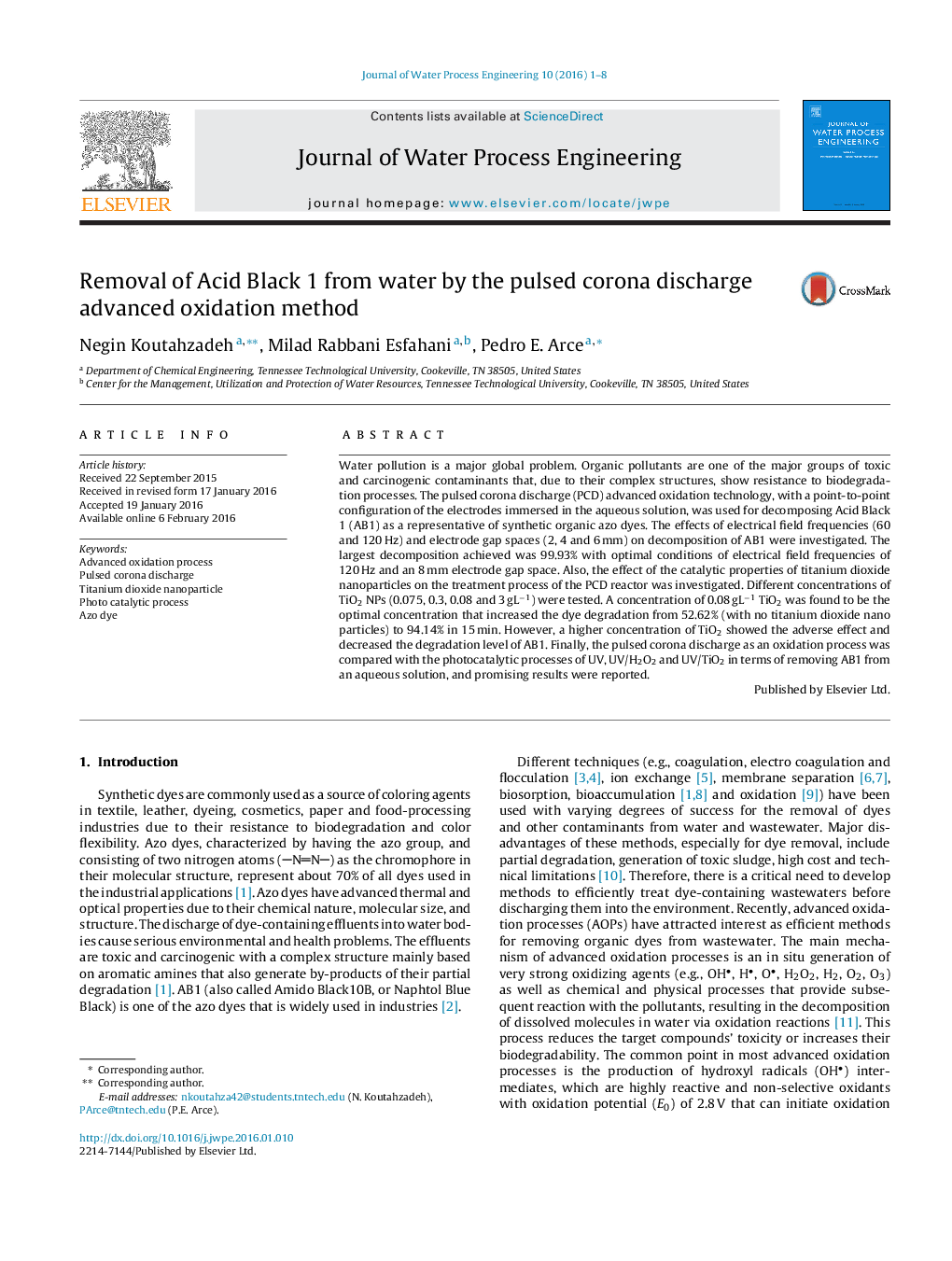| کد مقاله | کد نشریه | سال انتشار | مقاله انگلیسی | نسخه تمام متن |
|---|---|---|---|---|
| 232444 | 465288 | 2016 | 8 صفحه PDF | دانلود رایگان |
Water pollution is a major global problem. Organic pollutants are one of the major groups of toxic and carcinogenic contaminants that, due to their complex structures, show resistance to biodegradation processes. The pulsed corona discharge (PCD) advanced oxidation technology, with a point-to-point configuration of the electrodes immersed in the aqueous solution, was used for decomposing Acid Black 1 (AB1) as a representative of synthetic organic azo dyes. The effects of electrical field frequencies (60 and 120 Hz) and electrode gap spaces (2, 4 and 6 mm) on decomposition of AB1 were investigated. The largest decomposition achieved was 99.93% with optimal conditions of electrical field frequencies of 120 Hz and an 8 mm electrode gap space. Also, the effect of the catalytic properties of titanium dioxide nanoparticles on the treatment process of the PCD reactor was investigated. Different concentrations of TiO2 NPs (0.075, 0.3, 0.08 and 3 gL−1) were tested. A concentration of 0.08 gL−1 TiO2 was found to be the optimal concentration that increased the dye degradation from 52.62% (with no titanium dioxide nano particles) to 94.14% in 15 min. However, a higher concentration of TiO2 showed the adverse effect and decreased the degradation level of AB1. Finally, the pulsed corona discharge as an oxidation process was compared with the photocatalytic processes of UV, UV/H2O2 and UV/TiO2 in terms of removing AB1 from an aqueous solution, and promising results were reported.
Journal: Journal of Water Process Engineering - Volume 10, April 2016, Pages 1–8
